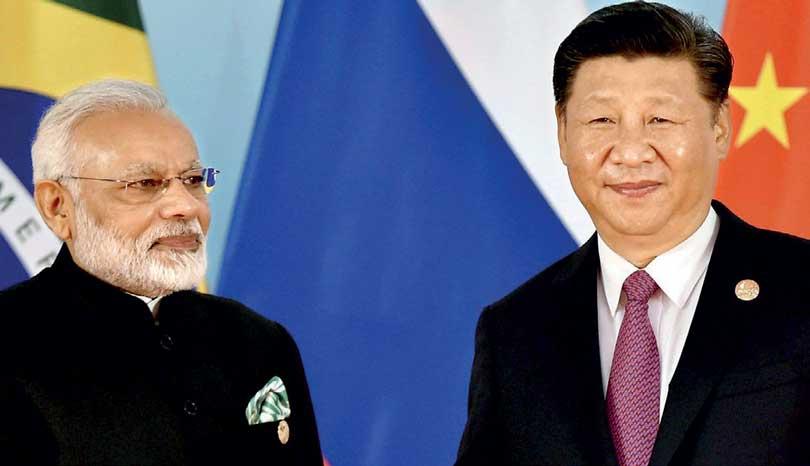09 Sep 2019 - {{hitsCtrl.values.hits}}

 India envisions a ‘multipolar Asia’: shared regional leadership where major and minor powers have equal standing in decision-making. This model is based on the rationale that China’s rise in Asia is unbalancing the regional power structure and eroding India’s strategic choices. While a growing association with China in bilateral and multilateral mechanisms has made New Delhi more open to Beijing’s engagement, China’s strategic urge to dominate has also created a need for caution.
India envisions a ‘multipolar Asia’: shared regional leadership where major and minor powers have equal standing in decision-making. This model is based on the rationale that China’s rise in Asia is unbalancing the regional power structure and eroding India’s strategic choices. While a growing association with China in bilateral and multilateral mechanisms has made New Delhi more open to Beijing’s engagement, China’s strategic urge to dominate has also created a need for caution.
India’s vision for a multipolar Asia rests on three critical elements. First, India aims to make global governance more equitable, pluralistic and representative. Beijing has long enjoyed the structural advantage of being a permanent member of the United Nations Security Council (UNSC). Achieving power parity with China in global decision-making bodies, primarily at the UNSC, has always been one of India’s underlying foreign policy objectives. New Delhi’s G4 association with Japan in Asia, along with Germany and Brazil at a global level, reflects a multipolar approach.
Second, minor and major powers in Asia must have a shared role in regional decision-making. India’s support for ASEAN-centred architecture confirms its preference for a consultative mechanism for regional economic integration, as does its association with the Regional Comprehensive Economic Partnership.
Regionally, a multipolar Asia would strengthen India’s maritime stake. India and China do not have a disputed maritime zone but China is troubled by India’s commercial presence in the South China Sea, including in the form of joint oil exploration with Vietnam. Meanwhile, India has been unsettled by repeated Chinese submarine adventures across the Sri Lankan coast. Beijing’s building of maritime infrastructure across the Indian Ocean through its maritime silk road has also raised eyebrows.
India’s thrust towards a multipolar Asia complements its vision of a democratic, rules-based order that promotes the freedom of navigation and overflight needed to protect its commercial interests. Beijing’s grey-zone strategy appears increasingly coercive such that many countries would find it difficult to challenge alone. A more broad-based consensus on a ‘free, open and inclusive Indo-Pacific’ would complement a concerted effort across the region to balance the projection of China’s growing power.
The third pillar of India’s push for multipolarity is inclusivity, rather than exclusivity. Multipolarity allows space for an external power like the United States to contribute to the region’s evolving security architecture. It also allows India to promote a regional paradigm of ‘shared leadership’ among the three major Asian powers: India, China and Japan. From New Delhi’s perspective, if the United States is excluded from Asia, Chinese President Xi Jinping’s proposition of an ‘Asia for Asians’ will remain only a nomenclature, making Asia a China-dominated region.
India appears to anticipate that the United States will become a stronger partner both militarily and strategically, without entirely endorsing a US-led order. India signed the Communications, Compatibility, Security Agreement (COMCASA) with the United States during their first 2+2 dialogue in September 2018. If the Civil Nuclear Agreement signed in 2008 marked a new beginning, both the 2016 Logistics Exchange Memorandum of Agreement and COMCASA strengthened that narrative further.
But improving relations with the United States does not imply India’s unwillingness to nurture its relationship with China. Narendra Modi’s 2.0 foreign policy will continue to nurture the relationship with China. India realises that China’s discontent has less to do with the global order and more to do with international infrastructure such as the Bretton Woods institutions. No matter how visible revisionist tendencies are in Chinese foreign policy under Xi, Beijing’s displeasure is primarily with US predominance in institutions such as the IMF, WTO and World Bank.
In order to build a less Western dominated international system, China is continuously promoting new institutions. To this effect, India has responded positively, primarily in working with China to exert pressure to reform the Bretton Woods institutions. Beijing has started acknowledging New Delhi’s significance by including it as a full member in the Shanghai Cooperation Organisation (SCO) and welcoming it as a founding member of the Asian Infrastructure Investment Bank (AIIB) and the New Development Bank (NDB).
In other words, a multipolar Asia would strengthen even India’s foreign policy outreach to China, by accommodating China as a strategic partner in the region. A multi-aligned policy framework would aim to allow India to better position its interests within and outside China-backed and US-backed institutions, without subscribing to either of their respective visions.
India has welcomed most China-backed multilateral bodies such as the AIIB, NDB and SCO. As the AIIB’s second-largest shareholder, New Delhi has always perceived it to be an Asian multilateral institution that will facilitate the accumulation of national and international infrastructure. Joining the AIIB was seen as a historic opportunity to occupy a greater role in the governance of multilateral institutions.
In contrast, New Delhi has always had strong reservations about the Belt and Road Initiative (BRI). India questions the BRI’s legitimacy as a connectivity initiative and has stated that such initiatives must be based on ‘universally recognised international norms, including good governance, rule of law, openness, transparency and equality’.
India perceives the BRI’s China–Pakistan Economic Corridor as a large-scale strategic hindrance since it ignores India’s sensitivities about territorial integrity and sovereignty. The fundamental differences between the AIIB and the BRI, in India’s perception, are the contested norms of universal participation and unilateralism.
India’s sustained economic growth along with strengthening strategic outreach across Asia — through its Act East policy, Link West policy, Connect Central Asia policy and S-A-G-A-R (Security and Growth for All in the Region) — has led to its embrace of a multipolar Asia where New Delhi has a greater role in regional affairs. An ideal alignment with China would both protect and enhance India’s rise, without contesting China’s rise.
(Jagannath Panda is Research Fellow and Centre Coordinator for East Asia at the Institute for Defence Studies and Analyses (IDSA), New Delhi. He is the Series Editor for Routledge Studies on Think Asia. He was also the coordinator of the 20th Asian Security Conference (ASC) at the IDSA, themed as ‘Multipolarism in Asia: Issues and Challenges’)
10 Jan 2025 6 minute ago
10 Jan 2025 2 hours ago
10 Jan 2025 2 hours ago
10 Jan 2025 3 hours ago
10 Jan 2025 4 hours ago